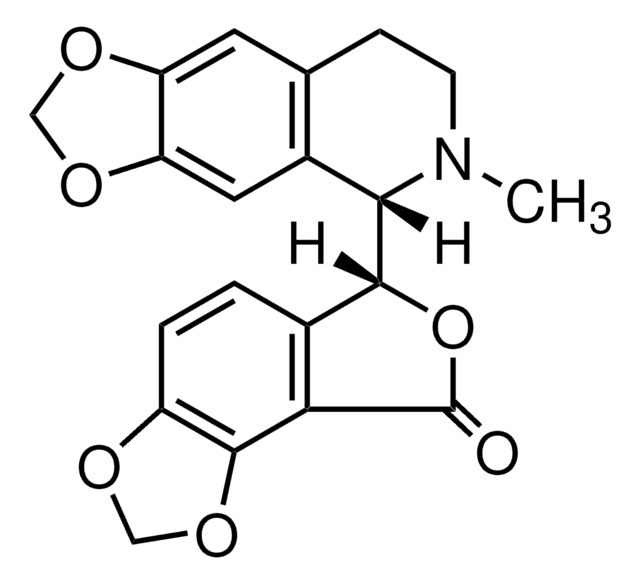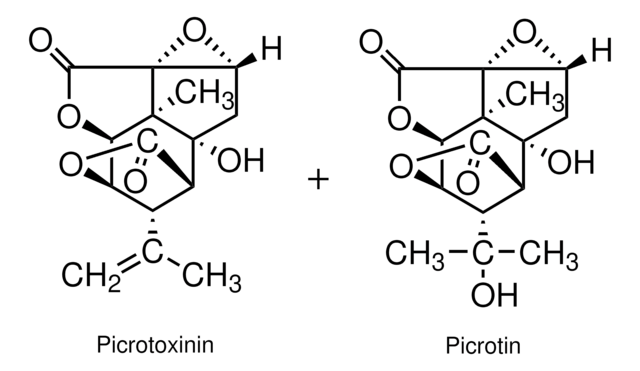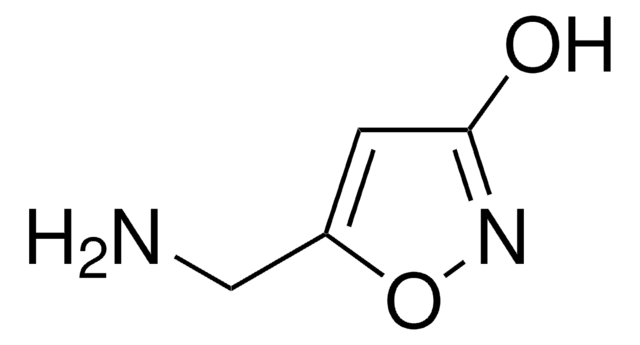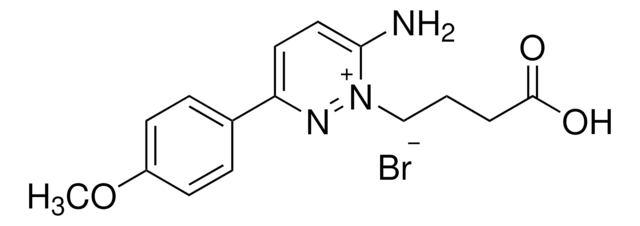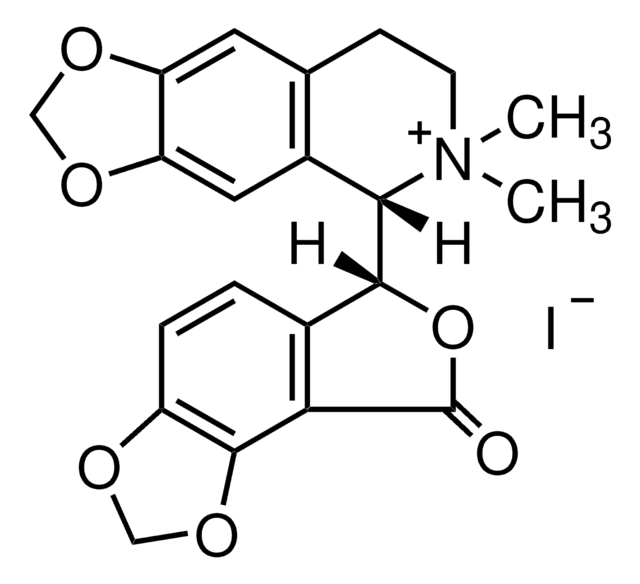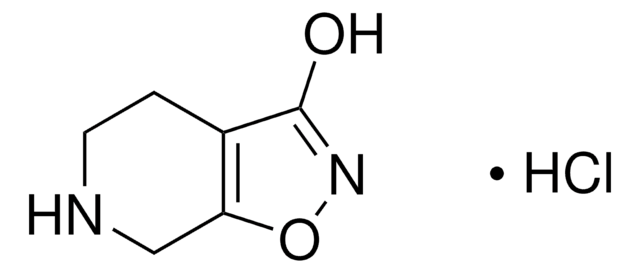추천 제품
분석
≥97% (HPLC)
양식
solid
색상
white to off-white
solubility
H2O: 16 mg/mL
DMSO: insoluble
SMILES string
[H]O[H].CP([O-])(=O)C1=CC[NH2+]CC1
InChI
1S/C6H12NO2P.H2O/c1-10(8,9)6-2-4-7-5-3-6;/h2,7H,3-5H2,1H3,(H,8,9);1H2
InChI key
GXVWAQPRAQORGS-UHFFFAOYSA-N
관련 카테고리
애플리케이션
(1,2,5,6-Tetrahydropyridin-4-yl)methylphosphinic acid hydrate has also been used as γ-aminobutyric acid C (GABAc) blocker in retinal ganglion cells.
TPMA has been used as a GABAC receptor antagonist to study the role of inner retinal inhibition in midget ganglion cells. TPMPA has also been used to study the role of GABAC receptor antagonists in suppressing orientation selectivity in ganglion cells.
생화학적/생리학적 작용
TPMPA is a hybrid of isoguvacine and 3-APMPA designed to retain affinity for GABAC receptors but not to interact with GABAA or GABAB receptors. Electrical assays show that TPMPA is a competitive antagonist of cloned human mu 1 GABAC receptors expressed in Xenopus laevis oocytes (Kb approx. 2 μM). TPMPA is >100-fold weaker as an inhibitor of rat brain GABAA receptors expressed in oocytes (Kb approx. 320 μM) and has only weak agonist activity on GABAB receptors assayed in rat hippocampal slices (EC50 approx. 500 μM). TPMPA may be used to investigate GABAC receptor function in the outer retina and in any other areas of the nervous system in which these types of receptor are present.
특징 및 장점
This compound is a featured product for Neuroscience research. Click here to discover more featured Neuroscience products. Learn more about bioactive small molecules for other areas of research at sigma.com/discover-bsm.
This compound is featured on the GABAC Receptors page of the Handbook of Receptor Classification and Signal Transduction. To browse other handbook pages, click here.
제조 메모
(1,2,5,6-Tetrahydropyridin-4-yl)methylphosphinic acid (TPMPA) hydrate is soluble in water at 16 mg/ml, but is insoluble in DMSO.
법적 정보
Sold in the USA under exclusive license from the University of California.
Storage Class Code
11 - Combustible Solids
WGK
WGK 3
Flash Point (°F)
Not applicable
Flash Point (°C)
Not applicable
개인 보호 장비
Eyeshields, Gloves, type N95 (US)
이미 열람한 고객
Sowmya Venkataramani et al.
The Journal of neuroscience : the official journal of the Society for Neuroscience, 30(46), 15664-15676 (2010-11-19)
Cells sensitive to the orientation of edges are ubiquitous in visual systems, and have been described in the vertebrate retina, yet the synaptic mechanisms that generate orientation selectivity in the retina are largely unknown. Here, we analyze the synaptic mechanisms
The first selective antagonist for a GABAC receptor.
Murata, Y., et al.
Bioorganic & Medicinal Chemistry Letters, 6, 2073-2076 (1996)
G A Johnston
Trends in pharmacological sciences, 17(9), 319-323 (1996-09-01)
The inhibitory neurotransmitter, GABA, activates a variety of receptors in all areas of the CNS. Two major subtypes of GABA receptors are well known: (1) GABAA receptors are ligand-gated Cl- channels that consist of a heteromeric mixture of protein subunits
D Ragozzino et al.
Molecular pharmacology, 50(4), 1024-1030 (1996-10-01)
In mammals, receptors for the inhibitory neurotransmitter gamma-aminobutyric acid (GABA) are divided into three pharmacological classes, which are denoted GABAA, GABAB, and GABAC. GABAC receptors are defined by their insensitivity to the GABAA receptor antagonist bicuculline and the GABAB receptor
Cindy Karouta et al.
FASEB journal : official publication of the Federation of American Societies for Experimental Biology, 35(9), e21846-e21846 (2021-08-19)
Myopia (short-sightedness), usually caused by excessive elongation of the eye during development, has reached epidemic proportions worldwide. In animal systems including the chicken model, several treatments have been shown to inhibit ocular elongation and experimental myopia. Although diverse in their
자사의 과학자팀은 생명 과학, 재료 과학, 화학 합성, 크로마토그래피, 분석 및 기타 많은 영역을 포함한 모든 과학 분야에 경험이 있습니다..
고객지원팀으로 연락바랍니다.